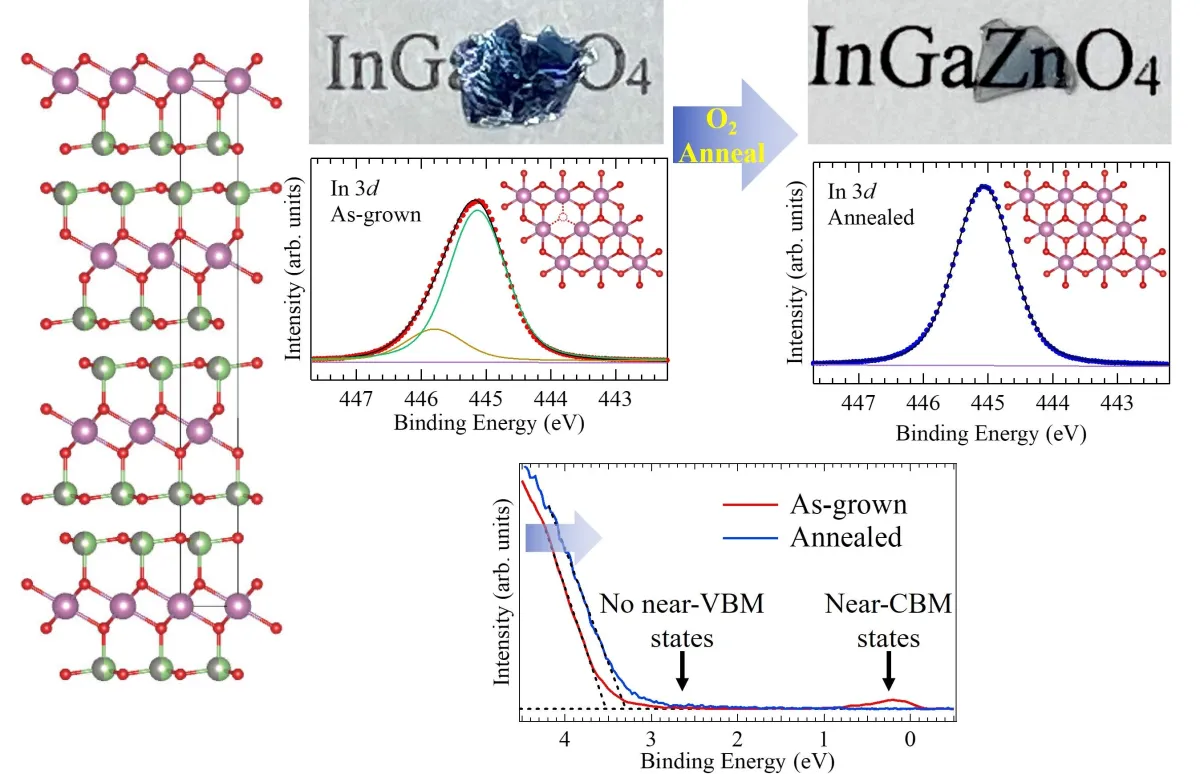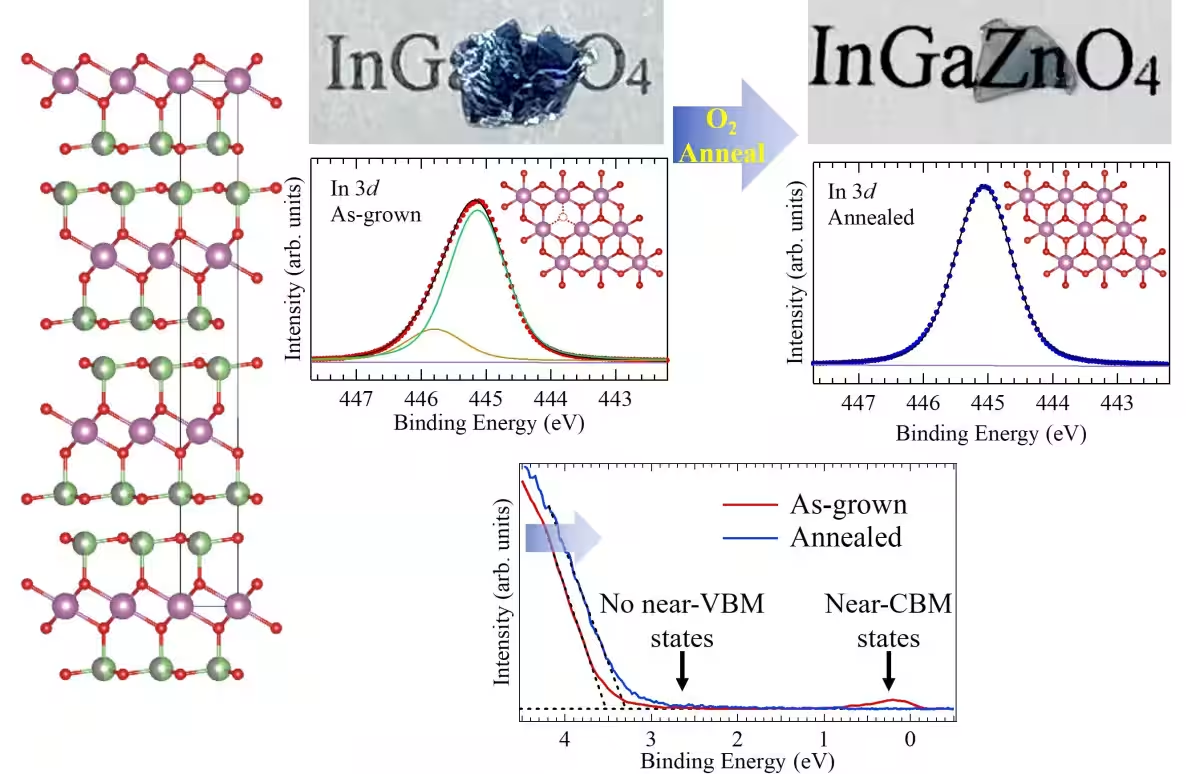

Revealing True Electronic States of IGZO Single Crystals for Next-Gen Display Innovations
Advancements in IGZO Single Crystals: A Step Towards Next-Generation Displays
In recent research, a collaborative team from Tokyo University of Science has shed light on the electronic states of high-quality InGaZnO4 (IGZO) single crystals, potentially offering new guidelines for the development of next-generation display technologies and transparent electronics. By utilizing Hard X-ray Photoemission Spectroscopy (HAXPES), a technique capable of probing the internal structure of materials, the research team has revealed previously unknown aspects of IGZO's electronic properties.
Key Findings
The study, which was conducted with the innovative light floating zone method, highlighted that oxygen vacancies, which were believed to exist randomly within the crystal, preferentially form around indium atoms. This preference fundamentally alters the understanding of the relationship between these vacancies and IGZO's electronic states. Additionally, sub-gap states that exist within the bandgap were attributed to these oxygen vacancies as well as the decline in crystalline quality, thereby emphasizing their impact on the performance of devices.
The crux of the research was based on the observation of both as-grown samples, which exhibited oxygen vacancies, and annealed samples, where these vacancies were mitigated by an annealing process in an oxygen atmosphere. The striking finding was that the electronic states of the as-grown samples showed significant characteristics distinctly tied to these defects while the annealed samples did not.
Importance of IGZO in Electronics
IGZO, a transparent conductive oxide, has gained traction in various applications such as flat-panel displays and flexible substrate thin-film transistors (TFTs). The material's notable electrical conductivity and wide bandgap make it a prime candidate for future electronic applications. However, historically, most studies focused on amorphous IGZO, leaving its inherent electronic structure inadequately explored due to the complex nature of synthesizing IGZO single crystals.
In 2019, the research group led by Professor Nobuaki Miyakawa successfully created high-quality IGZO single crystals, marking a pivotal moment in the study of this material. The recent findings are rooted in the detailed analysis of these single crystals, using HAXPES to probe the electronic structures that were previously only theoretically supported.
Background and Methodology of Research
The research team employed the cutting-edge light floating zone method to produce IGZO single crystals and to systematically investigate the influence of oxygen vacancies. The unique optical properties were utilized as an indicator for the vacancy remediation process during thermal treatment.
The HAXPES measurements were conducted at the SPring-8 synchrotron facility, utilizing an energy of 7.9 keV to examine both sample types under ultra-high vacuum conditions. This allowed a detailed evaluation of the oxygen vacancy distributions, which revealed significant differences in the indium environment related to vacancy positioning. Interestingly, the research confirmed that the formation energy for oxygen vacancies is substantially lower in the indium layer compared to other layers, suggesting a foundational understanding of IGZO's electronic characteristics.
Implications for Future Research and Technology
The results of the study have significant implications for developing more stable and efficient display systems by addressing the issues related to the sub-gap states, which are indicative of instability under operational loads, particularly in light-irradiated conditions.
Professor Tomohiko Saitoh, who led the research, expressed surprise at the unexpected nature of the findings, highlighting that such discoveries often drive further investigation and innovation within the field. This research marks a major advancement in understanding the electronic structure of IGZO, ultimately aiming to contribute to developing next-generation transparent electronics.
Published on June 16, 2025, as an Editor’s Pick in Applied Physics Letters, this groundbreaking study not only illuminates the electronic properties of a crucial material but also sets the stage for future applications in modern technology.
Conclusion
The exploration of IGZO single crystals aligns with the pressing need for innovative materials in electronics, potentially revolutionizing performance metrics in display technology and beyond. The continuation of this line of inquiry will likely yield further insights, paving the way for enhanced electronic devices that meet the demands of modern applications.

Topics Consumer Products & Retail)










【About Using Articles】
You can freely use the title and article content by linking to the page where the article is posted.
※ Images cannot be used.
【About Links】
Links are free to use.